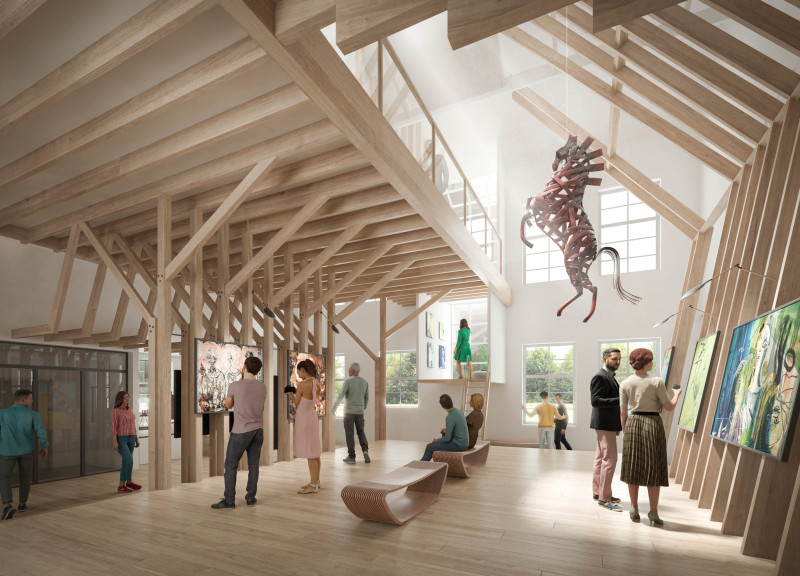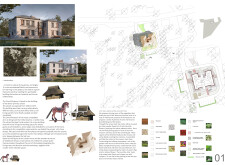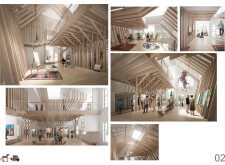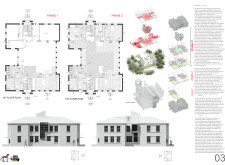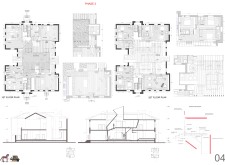5 key facts about this project
The Omul Museum project reimagines the role of a cultural institution within the community. Situated in a historically rich area, this architectural design innovatively merges contemporary functionality with respect for the past. The museum is designed to serve various purposes, including exhibition spaces, educational workshops, and community gathering areas. Its layout emphasizes interaction, encouraging a continuous flow between different functions.
The architecture employs key materials such as wood, glass, brick, and concrete, which contribute not only to the structural integrity but also to the aesthetic coherence of the design. The use of large glass panels enhances natural lighting within the spaces, creating an inviting atmosphere for visitors. Wooden elements offer warmth and bring an organic touch, reinforcing the connection to local craftsmanship. The strategic use of materials ensures that the building is both durable and environmentally responsive.
Innovative Design Approaches
One of the unique aspects of the Omul Museum is its phased design approach. By segmenting the project into three distinct construction phases, the design allows for flexibility and adaptability to future community needs. This modular approach minimizes disruption while facilitating the integration of contemporary design ideas with historical elements. Each phase aims to enhance the visitor experience while ensuring the preservation of the building’s historical significance.
Another noteworthy feature is the design’s promotion of communal interaction. The spatial arrangement includes open areas that facilitate gatherings and discussions, fostering a sense of community among visitors. This careful consideration of social dynamics in the architectural design is a defining characteristic that distinguishes the Omul Museum from typical museum projects.
Exploring Architectural Details
The architectural plans detail critical components such as exhibition halls, educational spaces, and outdoor areas that encourage engagement with the environment. Environmental sustainability is a major consideration in the project, with insulation materials incorporated to enhance energy efficiency and reduce environmental impact. The floor plans reflect a thoughtful integration of circulation paths, ensuring ease of movement within the various functional spaces.
Architectural sections reveal the height variations and ceiling designs that add visual interest and variation to the interior. The thoughtful juxtaposition of different materials and textures enhances the overall architectural narrative, bridging the historical context with modern design practices.
To gain a deeper understanding of the Omul Museum project, including specific architectural ideas and designs, we invite readers to explore the full range of architectural plans and sections. Engage with the detailed elements that contribute to the overall vision behind this culturally relevant and community-oriented architectural endeavor.


